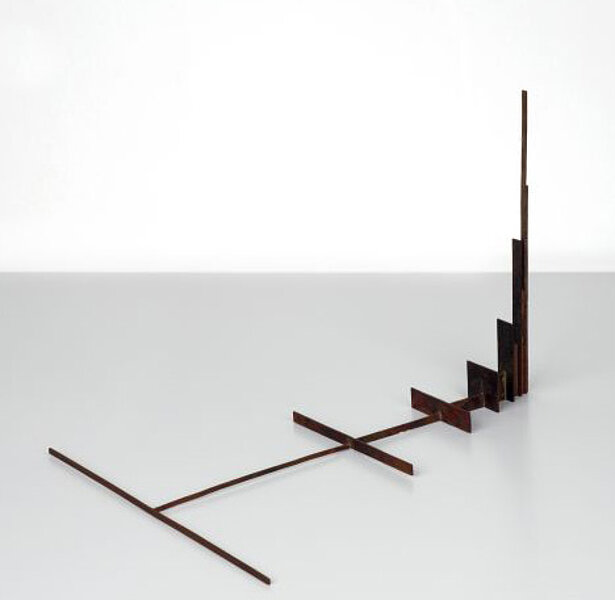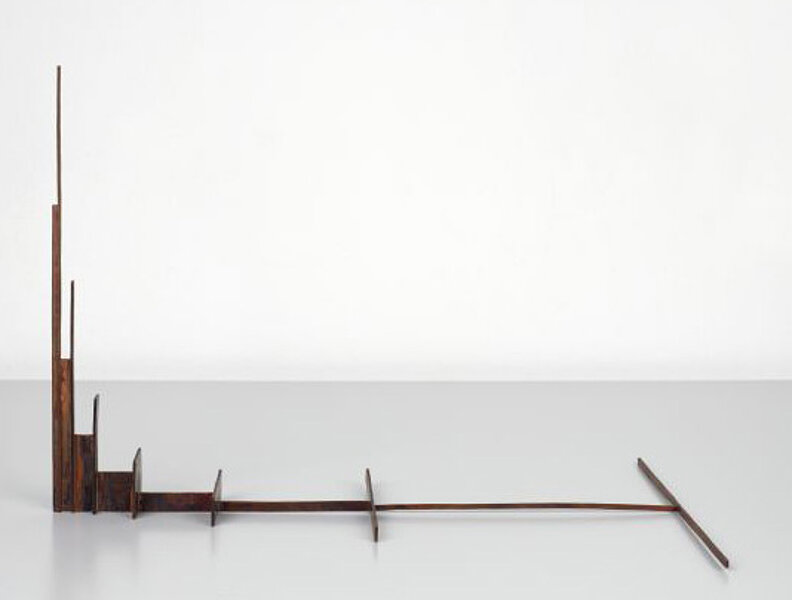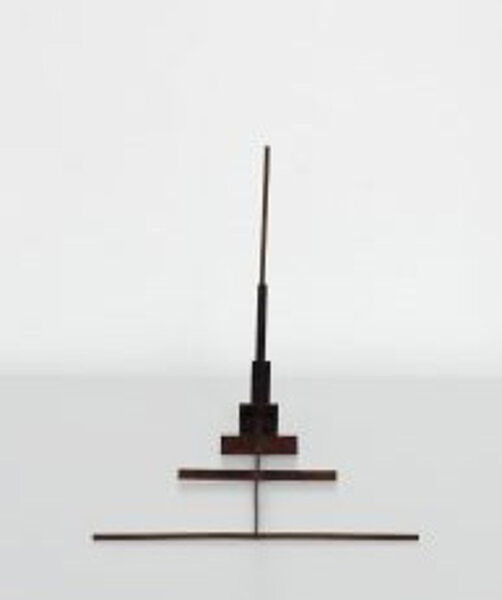
Painitz, Hermann J.
Schrittweise Formgewinnung aus dem Quadrat, ¼ der Möglichkeiten
Successive Form Production out of a Square, ¼ of the Possibilities
1963
| Object description | Copper |
|---|---|
| Object category | sculpture |
| Material |
Object:
copper
|
| Technique |
Object:
sculpting
|
| Dimensions |
Object:
height: 18,6 cm,
width: 28 cm,
depth: 18,6 cm
|
| Year of acquisition | 2007 |
| Inventory number | MP 19/0 |
| Creditline | Sammlung Dieter und Gertraud Bogner im mumok |
| Rights reference | Bildrecht, Wien |
| Further information about the person | Painitz, Hermann J. [GND] |
| Literature |
Hermann J. Painitz.Selbstverständlich Leidenschaftlich Exakt.Sammlung Dieter und Gertraud Bogner im mumok |
Hermann Painitz’s small study of proportions from 1963, entitled “Successive Form Production out of a Square, ¼ of the Possibilities”, is made of copper, which is an unusual material for sculpture. This arrangement of different sized lines shows Painitz’s interest in arithmetical sequences. For his art, he developed a method that created form through interlinking series of numbers, rows, layers, and rhythms, to which he allocated color codes. For this small sculpture, which rises up from a surface into three dimensions, Painitz used clear rules to determine the progression. The first two flat pieces, joined together to form a T, are the starting point. Each further segment is double the height of the previous one and half its length. This leads to a sequence that could theoretically be extended in both directions and into infinity. The sculpture thus represents only an excerpt from a mathematical operation. It is small and fragile, but also like a model for a much larger version—as a sculpture in public space or even as a piece of utopian architecture.
© mumok – museum moderner kunst stiftung ludwig wien


